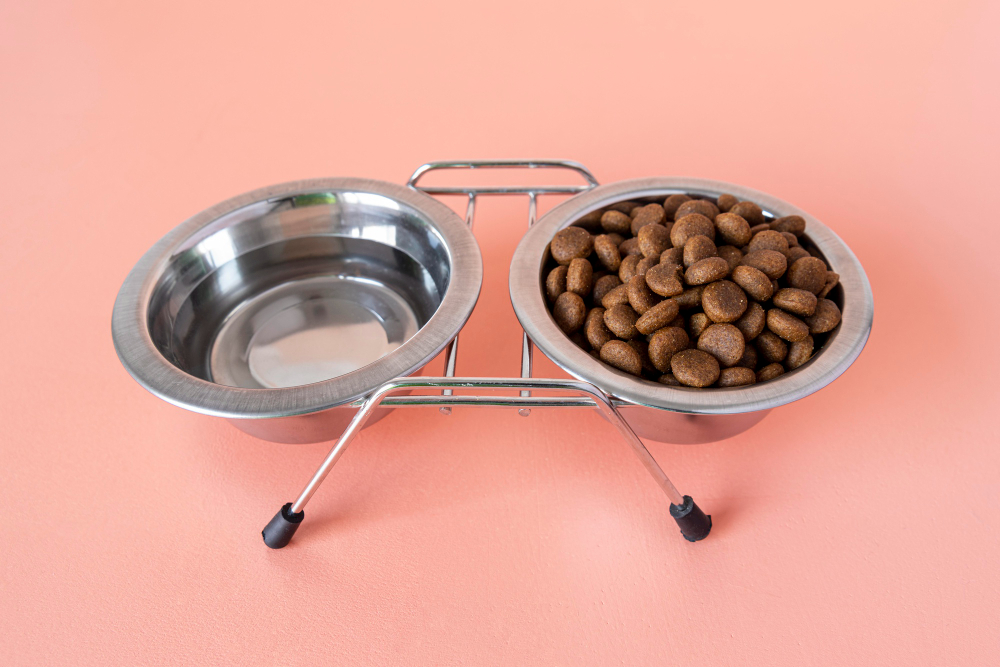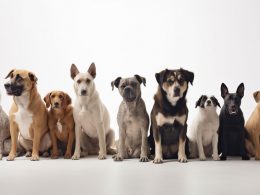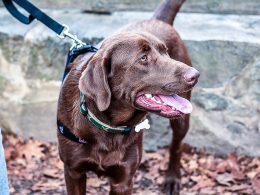Most pet owners do not know the importance of providing the correct water and food for the animals, they often leave the food at ease throughout the day and do not change the water in the drinking fountains every day.
In the article “Feed & Food” you learned about the different types of food for dogs and how to choose the best food, now you will understand how to provide food correctly and how to improve your dog’s water intake.
How Do I Know How Much My Dog Should Eat Per Day?
The best option is to seek the help of an animal nutritionist, as he will indicate the ideal amount that your dog should eat daily according to the type of food and individual needs, such as physical activity level, body score, and age. Always provide the amount described on the product packaging if you do not have a professional follow-up. In this way, you will avoid problems with being overweight and will be providing an adequate amount within the limit for the age and weight of your dog.
How Do I Know If My Dog Is Eating What It Needs?
Some dogs are pickier and may not be interested in meals, but be on the lookout for changes in your dog’s body condition score, coat, and fecal quality. Usually, dogs that eat less food than they need, due to the lack of energy consumed, become thin and weak, with little disposition, the hair becomes opaque and falls out at unusual times, and the fecal quality can be impaired, with soft stools.
On the other hand, some dogs are hungry and give the impression that they are always starved. However, just as you should be aware if your dog is eating little, you should also be mindful of exaggerations that can lead to overweight and obesity—causing many health problems, such as joint and hip deficiency, heart disease, and diabetes, among others. If you follow the recommendations for the amount of daily food described on the food packaging or the guidance given by the professional, your dog is not hungry, and it is just greedy. It should be noted that snacks, despite seeming harmless, are caloric foods and should be provided to pets in moderation.
How To Provide Food
Food should never be left unattended, as it is exposed to climatic conditions, causing oxidation and loss of nutrients, reducing palatability, not to mention that there may be contact with insects and rodents that can be vectors of diseases. The ideal is always to divide the daily portion two or more times. This way, you will guarantee the quality of the food and avoid health problems, such as gastroenteritis.
To fractionate the food, you must consider the dog’s life stage, individualities, and available time to handle this. It is recommended to divide puppies into 3 or 4 portions a day because they need a lot of energy for their development and have small stomachs, not being able to ingest large amounts per meal. Healthy adult and senior dogs are recommended at least two servings a day to avoid problems with gastric torsion and frequent vomiting caused by long periods of fasting.
The food supply interval should be between 6 to 8 hours for puppies and 8-12 hours for adult dogs. Therefore, adjusting your schedules to maintain a feeding routine is ideal, which also helps avoid destructive behaviors and decrease anxiety.
The food must be stored according to the instructions on the package, kept whenever possible, sealed in the original box, and never exposed to moisture in contact with the floor and walls. Always wash the bowl in which you serve the food to your pet because when you leave the bowl dirty, there is a proliferation of microorganisms that can affect dogs’ health, causing gastrointestinal problems. An option for more selective dogs is to add lukewarm water to the dry food, so there is an increase in food palatability and water intake.
Amount Of Water
Water is an essential nutrient that assists in the body’s functioning and regulates body temperature, and low water intake can cause digestive and kidney problems. The amount ingested varies according to the stage of life, the type of food consumed, frequency of physical activities, medication use, and ambient temperature.
Foods with little moisture, such as dry food, lead to increased water intake, as there is little water available in the food. Dogs tend to drink more water if their leading dry food. On the other hand, wet foods and natural food have about 70 – 80% of water, and dogs can supply more water needs only with water from food, ingesting less water.
You should leave the water always at ease, clean and fresh. Watch out for changes in water intake behavior. If you notice that your dog is drinking a lot of water and urinating more than usual, take him to the vet; it could be a sign of diabetes or chronic kidney disease. Some dogs ingest little water, and this can be a problem. To stimulate hydration, you should always provide fresh and clean water. In hot seasons, you can give homemade snacks such as fruit popsicles, but remember to check which fruits are allowed and can be ingested by dogs without causing problems.
How To Supply Water
Water must always be available to your dog. Remember to change it daily and clean the bowl to avoid the accumulation of microorganisms. Always leave it in a shaded place and out of areas with a lot of dirt, such as leaves and insects.
With all this information, the water and food supply can be easily adjusted and will increase your dog’s quality of life. Always remember that, in case of doubt, you can count on the help of professionals trained in animal nutrition.














